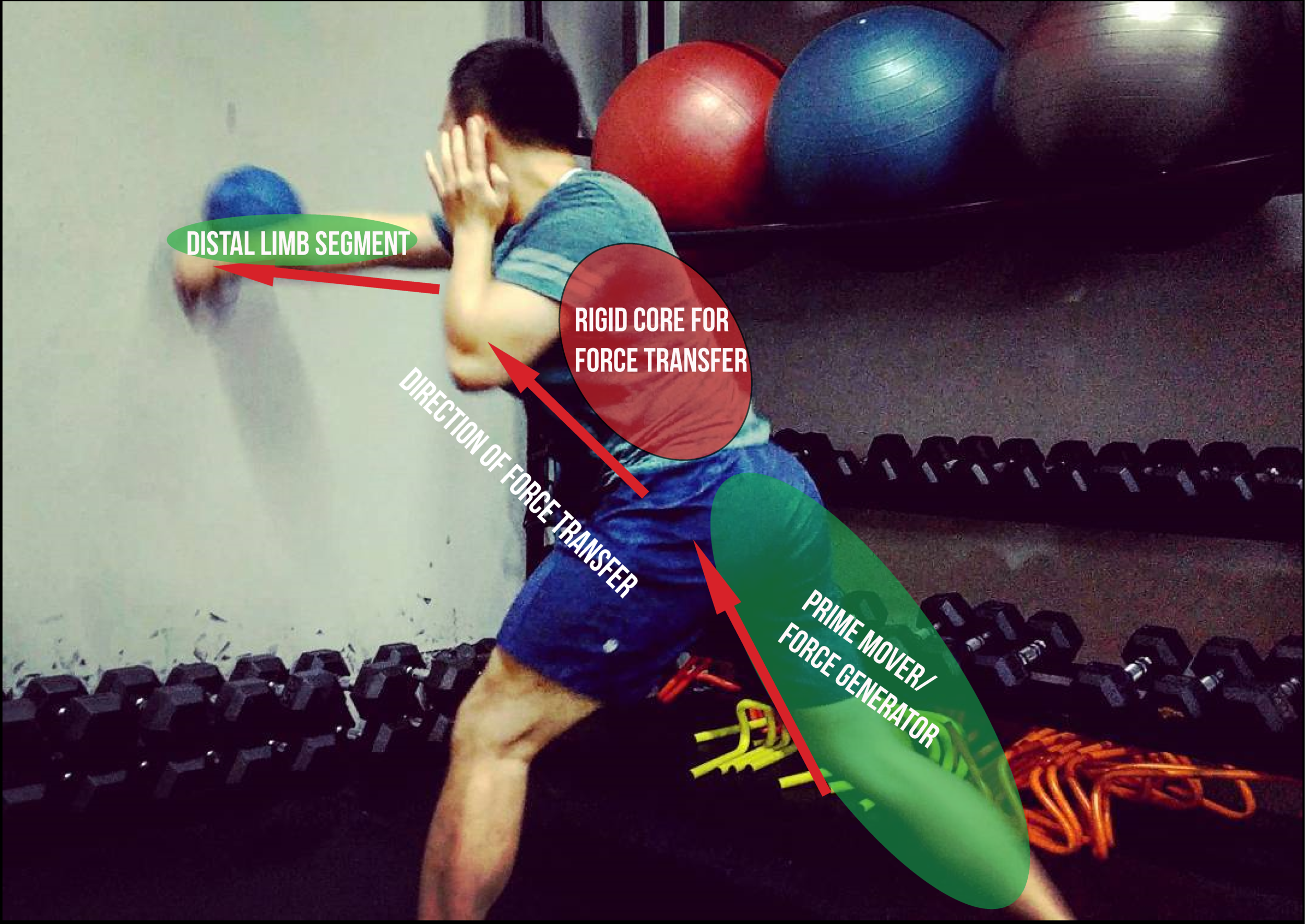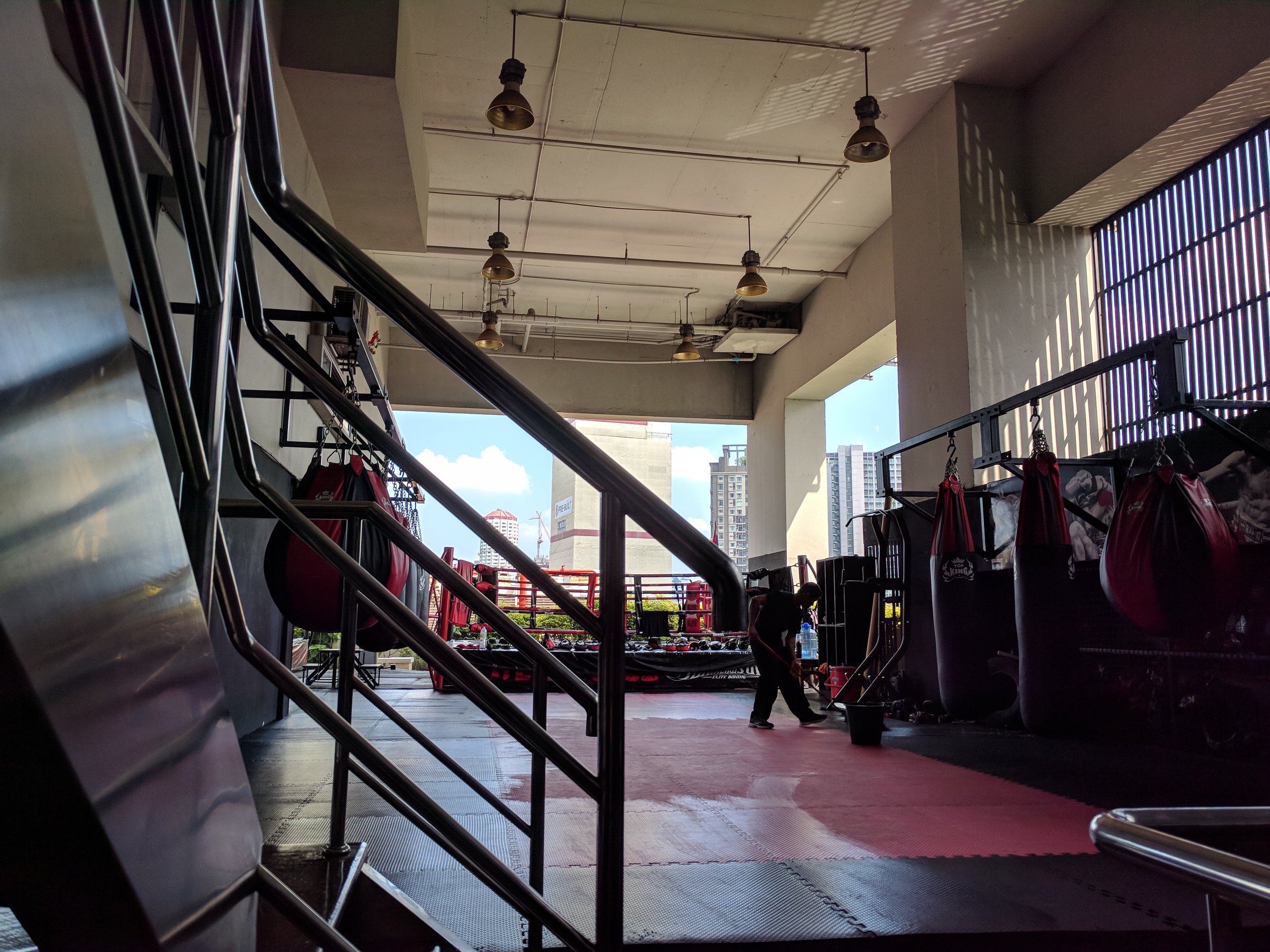[Fight Camp Conditioning Guest Post] Bridging The Gap: Conditioning For Combat Sports
My latest guest post on Fight Camp Conditioning covers the complexities of developing conditioning in the world of combat sports.
The training industry has come a long way since the time when tire flips and sledgehammer tire slams were the gold-standard for building endurance in MMA. As the sport becomes more popular and the quality of education for trainers improve, the way we approach conditioning should also improve. In the modern industry, it’s now about air-dyne assault bikes, mobility flows, perfectly crafted work-to-rest ratios and the use of heart rate tracking technology.
While there is nothing flawed with the current methods, I want to take a step back, revisit the components that make up conditioning performance in the world of combat sports and consider the application of these methods. My goal is to equip coaches, especially new coaches entering in the world of combat sports, with the knowledge needed to tackle the complexities that these combat sports possess.
Read More on the Fight Camp Conditioning Website
[Published on SimpliFaster.com] Individualizing and Optimizing Performance Training For Basketball
In the world of performance training, a needs analysis of the sport is mandatory—but this only represents the first step to a fully optimized training program. Not all athletes of the same position will have the same playing style, and understanding this is important for designing and coaching a training program to optimize performance and injury mitigation.
In the world of performance training, a needs analysis of the sport is mandatory—but this only represents the first step to a fully optimized training program. A coach must also look at the playing style of the individual athlete and the demands the athlete puts on their body to be successful on the court. Not all athletes of the same position will have the same playing style, and understanding this is important for designing and coaching a training program to optimize performance and injury mitigation.
This article features a case study on Darryl Wong to show the inner workings of a performance training program for a basketball athlete.
READ MORE @ SIMPLIFASTER [CLICK HERE FOR THE ARTICLE LINK]
The Science of Core Training: Training Methods & Application (Part 2 of Core Training Series)
Part 2 of this core stiffness article series will cover the core training principles and methods that drive short and long-term improvements in performance.
Read Part 1 Here
In part 1, I went over what the core is and the function of core stiffness in relation to sporting performance and optimal force and power output. To recap: core stiffness may refer to the core's ability to maintain stability in response to the influence of external forces, which may vary in magnitude, direction and speed.
Highly recommend reading part 1 before continuing on with this article.
In part 1, I mentioned that improving performance via increased core stiffness will depend on multiple variables:
The nature of the sport and the energy systems involved (How long is the core braced for? Does the athlete need more strength? Or more endurance?)
The particular movement you're trying to improve by increasing core stiffness
The properties of the movement itself and the speed of core stiffening
The magnitude of core stiffening (stiffer doesn't always mean better, remember: fast and powerful athletes also need to learn how to relax at the right times - like the example of the punches and kicks we used earlier).
First off, I'd like to break this article up into 2 categories, short-term improvements in core stiffness and long-term improvements in core stiffness.
SHORT-TERM IMPROVEMENTS
Short-term improvements or increases in core stiffness, are characterized by improvements seen within the same training session. Known and performed as "core activation" drills among personal training circles, some claim that performing core exercises prior to the main exercises of a workout "wakes up" the core and improves performance on the subsequent exercises. While terms like "wake up" are very arbitrary, it helps to look a potential mechanism by which core activation drills help with short term performance.
Post Activation Potential
Benjamin Lee and Stuart McGill carried out a study in 2017 to measure the effects of short-term isometric training on core torso stiffness and found beneficial results. For the core isometric training protocol, participants performed the plank, side plank and bird dog exercises for 5 sets of 10 seconds - with coaching cues being offered and standardized to all participants. Using both passive and active torso bending trials, the results showed that most participants had reductions in torso deflection and increased core stiffness (more details here).
While this study showed that short-term core stiffness can be increased via isometric core exercises, it doesn't tell us how that core stiffness will transfer to performance in other exercises, or how long this effect lasts. In their discussion, the authors pointed to the fact that the isometric exercises done could have elicited a post activation potential (PAP).
PAP is a physiological/neurological phenomenon where strength and rate of force development (power) is increased due to previous near-maximal muscle contractions. The most common protocols may include heavy back squats to elicit a PAP effect before sprinting and jumping, or heavy presses before performing ballistic medicine ball pushes/throws. Utilizing the PAP effect is also known as complex training. Here are some examples of exercise pairings, from the NSCA.
Taken from https://www.nsca.com/Education/Articles/Hot-Topic-Post-Activation-Potentiation-%28PAP%29/
For a concise explanation of the potential mechanisms behind PAP and how it works, visit Science For Sport.
Back to the study. While the authors pointed out the PAP mechanism, they acknowledged that their core training protocol, despite improving core stiffness, did not meet the requirements of a "potentiating exercise". In a standard PAP protocol, the potentiating exercise has to be close to max effort, with the recovery time reflecting the nature of exercise. Lee & McGill's (2017) study's core training protocol included 5 sets of non-fatiguing core exercises (only 10 seconds long - bodyweight, no added resistance), so I'd be interested to see if there could be a larger PAP effect if some core exercises are taken to near max effort. Here are some ideas:
Complex Training For Core & Power Exercises
Weighted Planks into Medicine Ball Slams (2-3 minute recovery)
(3-6 complex sets of <30sec weighted planks into 4-8 max effort slams)
Planks are one of the most frequently prescribed core exercises in the fitness and strength training. An easy way to increase the difficulty of the plank is to add extra resistance - perform them weighted. In this complex set, the weighted planks act as the potentiating exercise, increasing the the power output of the slams. While the effort should still be high during the planks, the physiological stress is relatively low compared to for example, a set of heavy front squats; meaning the recovery time should be lower than most heavy compound movements. A recovery time of 2 minutes should be adequate before performing the medicine ball slams.
Squatted Pallof Press Into Rotational Medicine Ball Slams/Throws (1-2 minute recovery)
(3-6 complex sets of 6-8 presses into 4-8 max effort slams/throws)
In this example, I use an anti-rotation exercise to potentiate a ballistic exercise for better power transfer. I also added a small rotation component to what would normally be an anti-rotation exercise (the pallof press) to mimic some of the movements seen in the medicine ball rotation throw. Keep in mind, I still maintain tension on my obliques working and the shoulder girdle stable during the press out and rotation. Recovery time can be anywhere from 1 to 2 minutes.
Other Potential Ideas
Core Stiffness For Powerlifting
Aside from using higher effort complex sets, I have found situations where non-fatiguing core exercises can help improve the quality of a training session. For the last couple of months, I've been using bodyweight planks and shorter weighted plank sets with my powerlifters prior to the main compound lifts . Planks are a good way to emphasize whole body tension (a skill that is required for powerlifting success), to improve the lifters' perception on how active their core for the rest of the training session, and to remind them about the importance of a rigid torso during the powerlifts. Most, if not all of my powerlifters, have found this pre-lifting core work beneficial.
With this protocol, perform several sets of planks at a low RPE (non-fatiguing) to avoid overly fatiguing the core musculature before the compound lifts. More advanced trainees can experiment with planks at higher intensities to elicit a greater PAP response. Slowly increase the intensity of these planks over time to find the sweet spot (balance of volume and intensity).
Core Stiffness For Weightlifting
Another idea I've implemented in the past is the use of higher velocity core stiffening drills to help facilitate weightlifting technique improvements. The catch position of snatches and cleans require a lifter to quickly decelerate the weight by using the prime movers and stiffening the core upon bar contact. I've found depth drop landings or plyometric regression exercises to help with this. Here's a quick example with one of my Strongman/Powerlifting athletes, who was brand new to the Olympic lifts at the time. Used in conjunction with other coaching techniques, he made some good improvements just over the span of 3 months.
Intra-abdominal Pressure (IAP)
If you've spent anytime studying strength training or have spent time in the weight room, you probably heard of the concept of intra-abdominal pressure (IAP). Also referred to as "bracing", intra-abdominal pressure is a technique by which a trainee creates 360 degree pressure in the abdominal cavity through controlled inhalation. The created pressure helps stabilize the lumbar spine, reduce the risk of back injuries as well as improve force output. The concepts of core stiffening and creating intra-abdominal pressure are complimentary and much like the core stiffening concepts discussed previously, IAP is not an all or nothing phenomenon.
IAP happens on a continuum, and can vary in intensity and duration depending on the movement requirements of the task. Coaches around the world all stress the idea of creating IAP during strength training, however, not many of them can explain it as well as Chris Duffin (Kabuki Strength) and Stuart McGill. Kabuki Strength describes IAP as a continuum of respiration (breathing) and stabilization (max effort IAP), best represented by a dial.
To give an example, the lumbar stability needs during a 1RM compound lift is different than a sub-maximal activity like running. Running requires just enough IAP to stabilize the torso, while still allowing for optimal breathing. Turn the knob accordingly.
““Improving your ability to select and coordinate the correct dial setting is the key for fluid movement and higher performance in any activity””
long-term improvements
Long-term improvements in core stiffness are characterized by improvements seen over weeks and months of core training. This section will cover the different categories of core training, as well as general training principles that drive long term improvements.
Core Training Categorization
To start, it's best to differentiate between core exercises in order to better analyze their cost-to-benefit ratio. All exercises fall on a general to specific continuum, with the reference points being the movement you want to improve, or the sport/position you're playing - core exercises are no different. Dedicated core exercises can be broken down into several categories:
1. Isometric Core Exercises
Isometric exercises are exercises where force is produced without a change in muscle length. Exercises like planks and hanging L-Sit where you're maintaining your body position are examples of isometric core exercises.
2. Anti-Rotational Core Exercises
Anti-Rotational exercises also fall the "isometric" category. These exercises challenge your ability to stabilize your body to prevent from rotating to any one side, maintaining your body position against an external force or in an imbalanced position. Common exercises include the pallof press, shoulder taps in push up position and many exercises in the half kneeling position. Other great examples not many people know about could be suitcase deadlifts, and uneven farmers walks (videos below).
3. Isotonic Core Exercises (Sagital Plane/Transvere Plane)
Isotonic exercises are exercises that consist of an eccentric and concentric portion - exercises that are not isometric (holds). They can be further broken down into sagital/transverse plane exercises. Sagital plane exercises include standing cable crunches, sit ups and hanging leg raises, while transverse plane exercises involves any exercise that involve torso rotation like cable wood-choppers and medicine ball russian twists.
4. Ballistic and Plyometric Core Exercises
Ballistic exercises are concentric-dominant power movements with little to no eccentric muscle action, such as jump squats and explosive push ups. In the realm of core exercises, medicine ball slams, rotational throws can be considered ballistic, but keep in mind the prime movers such as the shoulders and glutes also contribute to the force output.
Plyometric exercises are exercises with a short eccentric-concentric turnover, using the elastic properties of our muscles to improve speed and repeated power output. Many movements like running, repeated jumps/hops and combination striking (in martial arts) are considered plyometric. There are also plyometric exercises designed just to target the core musculature - many of these being rotational. I've posted a few examples below:
Taken from Nick Curson (Speed of Sport)
Taken from Elliot Hulse
Training principles and methods To Improve Performance
Conversations usually go south whenever the topic of "transfer to performance" is brought up; there are many complex variables to take into consideration and everyone seems to have their own definition of "functional" or what exercises will and will not help improve performance. I'll be giving some general tips and training principles of core training that can be applied to various different sports.
Post-activation-potentiation, non-fatiguing core primers and intra-abdominal pressure are all acute techniques that CAN lead to long-term improvements
The research is still not conclusive on whether these are significantly beneficial, but in theory: accumulating small short-term improvements should lead to long term improvements in performance. In other words, if these techniques are performed consistently throughout your training program, they may add up to a measurable increase in strength, power and endurance (whatever you're aiming for). I would also add that the use of PAP and core primers are optional, but in my opinion, IAP is not. I consider IAP a skill that must be learned and utilized consistently in order to effectively produce force, and stay safe doing so.
A combination of general and specific core exercises should be performed
Don't fall into the "functional" trap of prescribing overly-specific exercises. A general exercise that does not fully mimic the movement you're trying to improve can still be beneficial. For example, weighted planks are a great general core exercise to build core strength and endurance that will transfer over to various movements. Once a good base is built, you can start experimenting with more specific exercises. I've included some examples of specific exercises at the end of this article, mainly geared towards improving punch power, but can also be used as core training.
To learn more about the general-specific continuum and how to classify exercises for better training prescription, read my article I wrote on training variation here.
Principle of progressive overload
This is the premise behind improving any type of performance measure. Progressive overloading your core exercises either through a change in position, adding extra resistance, increasing the volume via sets, reps or time. In order to improve, you must progressively add stress to your physiological system, recover from it, and come back stronger.
Improving Core Strength (Slow-Isometric Stiffness)
Core strength, or slower-isometric type core stiffness, is primarily built using isometric and anti-rotation based exercises. Almost every core exercise listed above can be used to improve core strength, but what differentiates training core strength from core endurance is the intensity at which these exercises are performed. Reps should be done in the lower rep range (~<6 reps per set) or 80-95% of 1RM if a 1RM is applicable. Accordingly, intensity/weight progression is what you should be focused on. For example, progressively working towards heavier weighted planks (increasing intensity) instead of increasing the time of which you hold body-weight planks. Improving core strength will benefit every athlete, but strength and power athletes will see the best results.
Improving Core Ballistic/Plyometric/Power Ability (Fast-Recruiment Stiffness)
Core plyometric ability, or what I like to describe as a faster-recruitment type core stiffness, is built through plyometric core exercises and have a higher skill/timing component to it. This is the type of core stiffness I discussed in part 1, that is required for high-impact athletes who perform punching, kicking and striking movements. The ability to contract-relax-contract and produce a fast eccentric-concentric turnover is what defines an athlete with good core power and plyometric ability - both deceleration and acceleration are taken into account.
I gave examples of relatively advanced plyometric core training above (see Nick Curson and Elliot Hulse's videos). A more beginner friendly way to perform these exercises would be to reduce the range of motion on the exercises and reduce the power output until you improve your timing. A drill I found useful are short plyometric medicine ball rotation slams - timing and rhythm are paramount here so develop them before moving onto higher-intensity, higher-effort plyometrics.
Improving Core Endurance
When people think of the word "endurance" they immediately associate that with a low-intensity, long duration training protocol. Don't make the same mistake. Endurance can refer to the ability to maintain a certain power output for an extended period of time OR be able to repeatedly perform high-intensity bouts with little to no drop off in power output from start to finish. I recommend using work-to-rest ratios with your core exercises based on the energy system you want to develop.
Do you want to be able to repeat maximal high-intensity efforts? Use work rest ratios anywhere from 1:20 to 1:30+. For example, 6 seconds of maximum effort tornado ball slams with 2 minutes of complete rest in between sets, for several sets (1:20 work-rest ratio).
Looking to improve anaerobic capacity? Use work-rest ratios around 1:1. For example, 60 seconds of moderately heavy farmers walks with 60 seconds of active rest in between sets (1:1 work-rest ratio).
Looking for longer duration core endurance? Perform lower intensity core exercises for a total of 3 minutes+ at a time with a work-rest ratio of ~2:1. For example, hold a bodyweight plank for sets of 3 minutes with 1.5 minute rests in between. To add some variation to these longer sets, you can also perform 3-4 different core exercises as a circuit for 1 minute each. Over time, increase the duration of each set or the total number of sets (volume load progression at a set intensity).
Using work-to-rest ratios is another tool by which you can use to look at and utilize core training with. It can help you visualize which energy systems are at play, so you can make the adaptations you want to see. Endurance is specific.
Diminishing Returns
More core work means better performance right? Not so fast. Welcome to the principle of diminishing returns. The more you train core stiffness, the less benefits you reap in. I see core stiffness training a lot like maximal strength for sports. There comes a point where more core training does not equate to better performance on the field, court, platform or ring. Core stiffness, much like strength, serves as a foundation on which other important physical attributes are built on - rate of force development, agility, resilience to injury to name a few. Be careful not to allocate all of your time and energy into core stiffness training, while neglecting the development of other skills and attributes.
So how much is enough?
Unfortunately, I don't have a concrete answer for you. This really depends on what sport and movement patterns you're referring to. Core training should fill the gaps of your physical development, and be used in conjunction with sport-specific skill work and strength/power/plyometric training. Being able to competently perform all the movement patterns and core exercise categories listed above is a great start.
Biggest takeaway
If there's one thing you take away from this article, it's that core stiffness training is context-specific and should be thoughtfully prescribed and developed. Core training does not have to be boring, so don't be afraid to get creative. Below is some of my content I've put out on core training, core ballistic training and various medicine ball slam exercises. Thanks for reading!
ARTICLE: Great Core Exercises You're Not Doing
CORE TRAINING VIDEOS:
Bests of 2017
A review of 2017. Happy new year everyone, thanks for the support!
[Biggest Lesson of 2017]
When you run your own business, there is no escaping it. I try my best to put out content for you guys while still keeping some sort of privacy in my personal life, but it's something I always have trouble balancing.
As much I would like this to be MY bests of 2017, I can't escape the fact that I AM GC Performance Training.
From not knowing what content to put out, to having some of my articles recognized by some big names in the industry.
From clients getting injured to athletes hitting their lifetime bests after weeks and weeks of hard preparation.
Day in, day out. It's always a rollercoaster ride.
I'm thankful for the clients and athletes that have given me a chance to work with them, so that I can put food on the table, enjoy the hobbies I enjoy and be part of their journey.
[GCPT Athlete Of The Year] - Mark xu
Mark Xu is a 74kg Junior BCPA Powerlifter
This one was a hard one to pick. Everyone worked hard this year but Mark takes the cake on this one.
He has: Been injured, discouraged from training, dealt with his last year in high school, graduated high school, accepted in a University, remarkably improved his lifting technique and have gotten way stronger than before. All in 1 year.
He's one of my youngest athletes, and it's been a pleasure watching him develop into a more confident athlete. Look forwards to the next year with you bro.
Not taking anything away from everyone else on the GCPT team. I love you all.
[Best Articles Of The Year From GCPT]
5 Part Periodization Series - http://gcperformancetraining.com/gc-blog/periodization101
If there's one thing I think about every day, it's physical/mental development and preparation. That's all periodization really is, planning to develop and prepare in the most effective way possible given past training history and emerging information.
I was (and still am) tired of coaches arguing back and forth on the types of periodization and getting all worked up on specific terms and methodologies so I put a lot of hours writing this article series on periodization to get my thoughts out. If you have time and want to learn more about physical and mental preparation, as well as the variables and nuances involved, please give it a read.
Here are some of my top articles by category:
Powerlifting - "Building Your Base In Powerlifting"
Nutrition - "Nutritional Periodization"
MMA & Combat Sports - "High Performance Training For MMA - Experts Weigh In"
General Fitness - "The Current State Of The Fitness & Training"
[Most Memorable Moment of 2017]
My favorite moment (moments, really) has to be traveling to Asia after 5 years of not leaving North America. It was the first time going on "vacation" since I started my dream of owning a training and coaching business.
Got the chance to experience Japanese and Thai culture & food, as well as revisit the motherland (Hong Kong). Thanks to online coaching, I'm able to keep in touch with my athletes even while i'm away.
Looking forward to more trips in 2018 ;)
[Goals For 2018]
I look to better myself physically and mentally every year, so 2018 will be no different. I've been gradually practicing more and more martial arts this year, and that will definitely pick up in the upcoming year.
Muscle mass, strength, power, endurance, sport-specific skills... I want all of it. ALL OF IT. Bring it on, bro.
Special thanks to all my clients and athletes. Coaches that have helped me improve this year. All of my followers (I've been able to grow from 240 followers to 745 on my GC Performance Training page. Thanks for the love!).
Happy new year!
Benefits of Including Cardio Into A Strength Training Routine
As a trainer and coach, there are many things I've gotten wrong in the past. This series will cover topics I've been wrong and misinformed about, how I changed my stance, as well as how my practical recommendations and advice have evolved over the past months and years in light of newer information.
Admitting to your mistakes is the first step to self-improvement. In the personal training, performance and nutrition industry, you either learn and adapt, or you get left behind. As a trainer and coach, there are many things I've gotten wrong in the past. This series will cover topics I've been wrong and misinformed about, how I changed my stance, as well as how my practical recommendations and advice have evolved over the past months and years in light of newer information.
Cardio Training
Avoid cardio at all costs.
The treadmill are for cardio bunnies.
Cardio will make you smaller and steal your muscle and strength gains.
When I first started to strength train more seriously, these were the quotes I saw all over the internet. The young lifter that I was, I followed this advice and worst of all, I bought into the anti-cardio mindset. During my time powerlifting, I even read some advice from a big name saying something along the lines of: "The best thing you can do in terms of recovery from powerlifting is sit on your ass, the more time you spend resting, the more strength you'll gain". Ridiculous right? Well, at the time it didn't seem too ridiculous to me.
I grew up practicing martial arts, I ran track in elementary school, I was an explosive, high energy athlete as a kid. My whole life I didn't believe I was good at prolonged low-intensity cardio, so I did everything I could to avoid it. I didn't leave my comfort zone, simple as that. After injuring myself through powerlifting, I wasn't able to do what I loved. I knew the rehabilitation process would take a long time. Something had to change.
If I truly wanted to become the best personal trainer and the best coach I could be, why am I neglecting cardio? Why am I neglecting the science of endurance training and conditioning? A lot of people call themselves strength & conditioning coaches, yet only know how to strength train; I didn't want to be one of those people.
That's when I bought my first bike. I put in the hours on the pavement, flats, uphill, downhill; I fell in love with endurance training and the challenges that come with it. Taking time off strength training and putting more emphasis on conditioning helped me grow as a trainer, and as a strength & conditioning coach. It taught me how to be unbiased when designing a training program, and how to take the best pieces from each modality of training (strength training and endurance training) while discarding the misinformation, myths and negative mindsets that come from the strength training-only and the endurance training-only cultures.
it's all about the mindset
As someones who's been through it AND studied the science, I get where this anti-cardio mindset comes from. Strength athletes are still not buying into the benefits of cardio. I understand there are other ways of improving general work capacity other than jumping on an elliptical or stationary bike. But the biggest problem I see is that many recreational strength athletes and so called "fitness coaches" are neglecting cardio all together, and it's a shame. Not only is this anti-cardio mindset detrimental to the physical and the cardiovascular health-related attributes of an athlete, I have seen it manifests itself in the form of mental weakness and laziness; lifters that complain about 8 rep sets, lifters that embrace the unhealthy and overweight strength training lifestyle, lifters that have to demonize other forms of exercise to feed their own ego. If you're a fitness trainer and you preach an anti-cardio minset, you're not taking client's health seriously.
Over the last few months, I've realized muscle mass, strength and conditioning are not mutually exclusive, and you should as well. I've taken inspiration from some of the best MMA fighters, "hybrid athletes" like Alex Viada to top level Crossfit athletes.
Low-intensity cardio training is a lifters best friend. Here are some benefits:
Increased blood flow into working muscles for recovery in between lifting sessions
Great for cardiovascular health (low intensity training induces adaptions in the heart that high-intensity training simply can't)
Act as an anti-depressant and improves mental health and short term memory
Can be used as a form of active-meditation
I'm not telling you to hop on the elliptical for a 2 hour aerobic training session, just perform some type of steady state training 1-2x a week and acclimitize your mind to longer, prolonged efforts of physical activity.
Practical Recommendation and Takeaways
Perform 30-60 minutes of steady state low-intensity cardio on rest days to improve blood flow and muscle recovery.
Feel free to use several modalities, you don't have to just stick with one. Here's an example:
1 Modality Training
Stationary Bike - 45 minutes at low-intensity, conversational pace3 Modalities
Stationary Bike - 15 minutes
Skip Rope - 15 minutes
Incline Treadmill Walk - 15 minutes
Much like strength training, progressions can be planned, intensity can be undulated throughout the week. Here's an example from 1 week of training
Workout #1 Moderate steady state
5 minute easy warm up, 45 minutes at 75% of your maximum heart rate, 5 minute easy cool downWorkout #2 Easy steady state
70 minutes at 65% of your maximum heart rate.
Steady state aerobic training can improve your mental game and mindset more so than your physical performance. Get comfortable with uncomfortable situations, be humble and be willing to do things out of your comfort zone to grow and improve as an athlete, no matter what the sport.

![[Fight Camp Conditioning Guest Post] Bridging The Gap: Conditioning For Combat Sports](https://images.squarespace-cdn.com/content/v1/55072bf0e4b055a8f66250e9/1585917228624-NZJGW93SQK2P6F890J2A/New+article+title+pic.jpg)
![[Published on SimpliFaster.com] Individualizing and Optimizing Performance Training For Basketball](https://images.squarespace-cdn.com/content/v1/55072bf0e4b055a8f66250e9/1559464401554-UTSFUHZQUTNOISFNVX1P/Daryyl-Wong-Court.jpg)
























